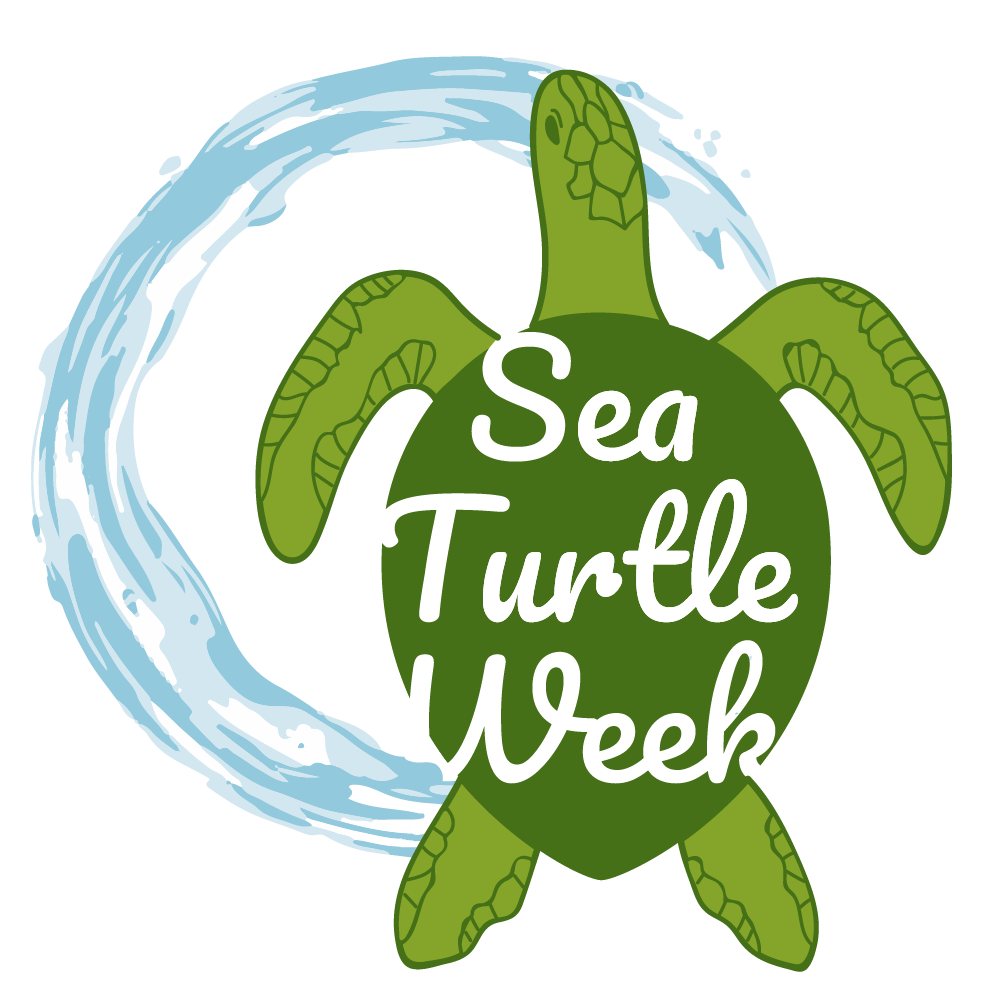JUNE 14TH - GREEN SEA TURTLE DAY
Scientific Name: Chelonia mydas
Size: 4.0 feet (1.2 meters)
Weight: 500 pounds (225 kg)
Diet: Seagrass, algae, seaweeds, other marine plant life
IUCN Status: Listed as Endangered, Population Trend: Decreasing / ESA - eleven population segments all listed as Threatened or Endangered
FUN FACT
Green sea turtles are believed to improve the health of seagrass beds and associated microhabitats. They will graze the beds, taking off the tops of leaf blades, while avoiding the roots. The seagrass will grow healthier and faster with a daily trim.
BEHAVIOR
Their beak is sharp and finely serrated, perfectly adapted for grazing in seagrass beds and scraping algae off of hard surfaces.
LIFESPAN
Reaching maturity around 25-35 years old, it is estimated that green sea turtles can live for at least 70 years. As hatchlings they spend time in open ocean habitat and return to nearshore coastal habitats as adults.
REPRODUCTION
Green sea turtles will nest 3-5 times per season and lay about 115 eggs per nest. Eggs incubate for roughly 2 months before hatching. Females prefer to nest out on open sandy beach.
DISTRIBUTION
Green sea turtles can be found in the sub-tropics and tropics worldwide, with major nesting beaches in Tortuguero (Costa Rica), Oman, Florida, and Raine Island (Australia) where thousands of turtles nest each night during peak nesting season. They are also found nesting on French Frigate Shoals in the Northwestern Hawaiian Islands, Guam, American Samoa, Suriname, Georgia, South Carolina, North Carolina, Puerto Rico, and the US Virgin Islands.
World map providing approximate representation of the green turtle's range - NOAA Fisheries
MAJOR THREATS
Population declines are mainly due to harvest of their eggs and meat for human consumption. Fibropapilloma (also known as FP) is a disease associated with lesions and rapid tumor growth on the eyes, mouth, and soft-skin areas, as well as internal organs. FP, believed to be connected to ocean pollution, has greatly affected their populations, especially in Florida and Hawaii, but also the Caribbean and Australia. Other threats include plastic ingestion, boat strikes, coastal development, feeding habitat degradation, and entanglement in fishing gear.
Videos
Timelapse of green sea turtles nesting on Raine Island, Australia - Queensland National Parks


